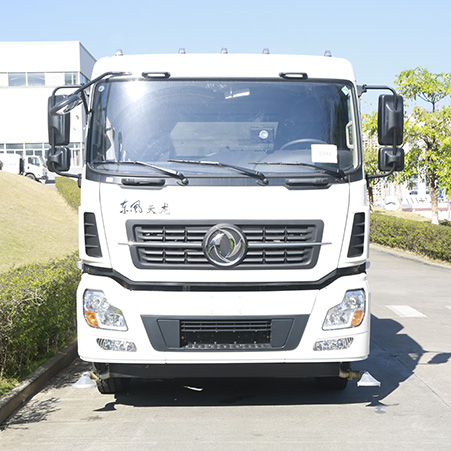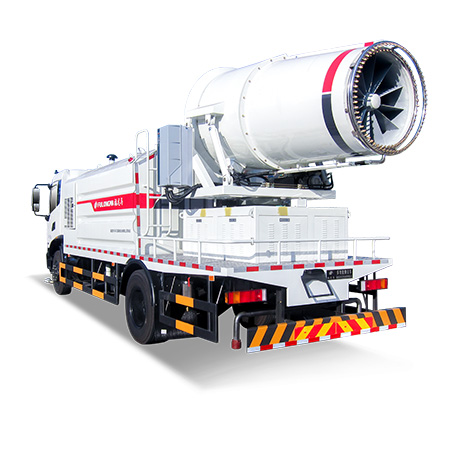Did you know that dust storms can travel thousands of miles, carrying particles that can cause serious health problems and environmental damage? The World Health Organization estimates that dust particles contribute to millions of deaths each year due to respiratory and cardiovascular diseases. Controlling dust is not just a matter of cleanliness but a significant health and environmental concern.
What is Dust Suppression and Why is it Important?
Dust suppression refers to the methods and techniques used to control and minimize the amount of dust generated in various environments such as construction sites, mines, roads, and industrial areas. Dust suppression is crucial because excessive dust can lead to numerous issues, including respiratory problems for workers and nearby residents, decreased visibility leading to accidents, and environmental degradation.

Why are Dust Suppression Vehicles the Best Method?
Dust suppression vehicles are specifically designed to tackle the challenges posed by dust in a highly efficient manner. They are equipped with large water tanks, powerful spray nozzles, and advanced control systems that allow for precise application of water or chemical suppressants. Here’s a brief overview of why these vehicles outshine other methods:
- Efficiency and Coverage: They can cover large areas quickly and uniformly.
- Adaptability: They can be used in various environments and conditions.
- Technological Advancements: Modern vehicles come with automated systems for enhanced performance.
Traditional Dust Suppression Methods
Before delving deeper into why dust suppression vehicles are superior, let’s take a look at some traditional methods of dust control:
- Water Spraying: Using hoses or sprinklers to wet the dust. While effective, it is labor-intensive and often results in uneven coverage.
- Chemical Suppressants: Applying chemicals to bind dust particles. This method can be effective but is often expensive and may have environmental drawbacks.
- Road Sweeping: Mechanical sweepers collect dust from surfaces. This method is good for surface dust but doesn’t address airborne particles effectively.
- Gravel or Mulch: Covering bare soil with gravel or mulch to prevent dust from becoming airborne. This method is limited to certain environments and can be costly for large areas.
Advantages of Dust Suppression Vehicles
Now, let’s explore in detail why dust suppression vehicles stand out as the best option:
1. Efficiency and Effectiveness
Dust suppression vehicles are designed to deliver water or chemical suppressants uniformly over large areas, ensuring thorough coverage. This uniform application is critical in minimizing dust generation effectively. With high-capacity tanks and powerful spray systems, these vehicles can operate for extended periods without needing frequent refills, enhancing their efficiency on large sites.
2. Coverage and Capacity
These vehicles are built to handle extensive areas, making them ideal for large construction sites, mines, and roadways. Their high-capacity tanks reduce downtime caused by frequent refills, ensuring continuous dust control. Whether it’s a long stretch of road or a sprawling mine, dust suppression vehicles can manage the task efficiently.
3. Adaptability and Versatility
Dust suppression vehicles are incredibly versatile and can be used in various environments. They can navigate rough terrains in mines, maneuver through construction sites, and operate on public roads. This adaptability makes them suitable for multiple industries and applications.
4. Technology and Automation
Modern dust suppression vehicles are equipped with advanced technologies such as GPS and automated spraying systems. These features allow for precise control of water or suppressant application, reducing waste and ensuring optimal use of resources. Automation also minimizes human error and enhances the overall effectiveness of dust control efforts.

5. Environmental and Health Benefits
By effectively controlling dust, these vehicles significantly reduce the amount of harmful airborne particles. This reduction leads to better air quality, decreasing respiratory and cardiovascular health issues among workers and nearby residents. Additionally, the controlled application of water and suppressants minimizes environmental impact compared to more indiscriminate methods.
6. Cost-effectiveness
While the initial investment in dust suppression vehicles can be high, their long-term benefits outweigh the costs. These vehicles reduce the need for frequent manual labor, lower the risk of health-related work stoppages, and minimize material waste. Over time, the efficiency and effectiveness of these vehicles lead to significant cost savings.
In conclusion, dust suppression is a vital aspect of maintaining a safe and healthy environment in various industries. While traditional methods have their place, dust suppression vehicles offer unparalleled efficiency, coverage, adaptability, and technological advantages. These vehicles not only enhance the effectiveness of dust control efforts but also provide significant environmental and health benefits. As industries continue to seek sustainable and effective solutions for dust control, dust suppression vehicles stand out as the best choice for tackling this pervasive issue.







